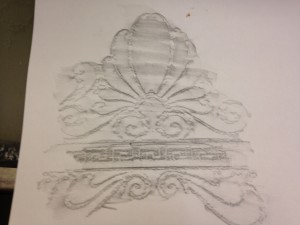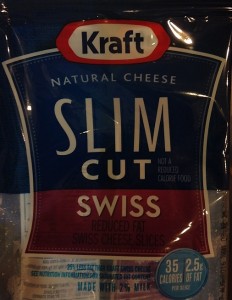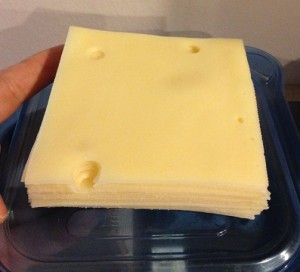Aug 17
From Equity Talk to Equity Walk: Expanding Practitioner Knowledge for Racial Justice in Higher Education by
Tia Brown McNair, Estela Mara Bensimon, and Lindsey Malcom-Piqueux is a great book for anyone working in higher education. It provides a theoretical framework, action steps, and examples.
A few key take a ways from this book:
1) Disaggregate your data in lots of ways (race, gender, course, learning outcomes). (This made me uncomfortable due to small sizes of subgroups until I realized we aren’t trying to make claims of “statistically significant differences,” but rather looking for actionable patterns.
2) Talking about race is hard, but necessary.
3) Don’t put the responsibility to fix the problem (of difference in outcomes by racial groups) on the very groups who are suffering from it. They have enough to do. And also, its our (white people’s) fault due to slavery, land grabs, racist housing policies, etc.
Oct 30
One of the challenges in creating realistic problems for my students is finding good/interesting sources of data. I will list here some useful site for finding data along with a brief description of the sorts of data one can find there. I have to confess that this post is largely self-serving, providing me with a record of data sources I have heard of or used before.
Data.gov is “the home of the US Government’s open data.” There are over 300,000 data sets, for example Chicago crimes from 2001 to the present and national hourly precipitation data.
Data.detroitmi.gov is a data base of information on the city of Detroit. Information includes government data, public health data, and education data.
data.nasa.gov is NASA’s data base which includes climate change data.
http://mlb.mlb.com/stats/sortable.jsp has the statistics of every major league baseball player which can be sorted and filtered by things like team and position.
http://www.ncaa.org/about/resources/research/data-sharing is a source of data about NCAA teams/players.
https://www.cia.gov/library/publications/resources/the-world-factbook/ is the CIA’s “World Fact book” containg a wide variety of information on all the world’s countries from land area to GDP to major exports.
https://www.bls.gov/data/ the US Bureau of Labor Statistics.
https://pollingreport.com/ has results of American Opinion Polls.
World Values Survey https://www.worldvaluessurvey.org/wvs.jsp .
https://www.datafiles.samhsa.gov/data-sources (The Substance Abuse and Mental Health Data Archive).
https://data.cdc.gov/ Center for Disease Control.
Aug 03
These are the slides for my talk at MathFest 2016. MathFest2016Talk-AuthenticAppliedProblems-pdf.pptx
My talk was/will be on Saturday morning at 9:50 in Union A. If you can/did make it, thank you.
If can’t make it, feel free to enjoy the slides anyway.
Jun 20
Overview
This activity introduces children to the abstract concept of projections from 3 dimensional space onto 2 dimensional space in a concrete and age appropriate way by using rubbings of objects with interesting surfaces. The activity is written for a Kindergarten class, but could easily be adjusted for other early elementary students. The activity takes 30-50 minutes. The main portion of the directions are below, but the full version is here: Rubbings as Projections (including the coin equation handout).
Large group Introduction
- Demonstrate how to take a rubbing (I used the bottom of my shoe)
- Discuss what information is preserved in the rubbing (tallest portions) and what is lost (color, how far down the lower parts are)
- Discuss three dimensions versus two dimensions. If you can only see one side of something, say the top, you don’t know very much about it. Cone upside down looks the same as a cylinder from the top. Cube and rectangular prism look the same from the top (if the rectangular prism is oriented correctly). If you can only see my back, you don’t know how many buttons my shirt has.
- (optional) Show an object, have students predict what rubbing will look like, take the rubbing and discuss (possibly do this two or three times)
- Get out the matching cards (RubbingsAsProjections-MatchingCards). Pass out the pictures of the rubbings to groups of students Show the pictures of the objects one at a time on the Elmo/smart board/by holding them up. Students should try to pick out the picture of the rubbing that goes with the object. Here’s a sample pair:


Small group “centers” done in rotation (pick four to do-I think the first four are the best)
- Doing Rubbings-each student should make a rubbing of the bottom of their shoe.
- Tallest Portions-cut off and look at the tallest portions of Swiss Cheese, an apple, carrot with the greens still attached, angel food cake, loaf of bread, pear, or similar food objects. Draw a picture. (“Remember a rubbing is basically taking the top layer of something, so at this station we are going to cut off the top layer of some food.” First I cut the top off the apple (using a kiddie safety knife), “what does this top layer tell us about the rest of it?” Then used the corer slicer to cut the apple into 3 wedges which the students ate. Then I help up a small piece of the carrot leaves. “What do you think this is the top layer of?” Students knew it was a plant, but didn’t know which one. Then I got the carrot out of my bag and talked about how the top layer was very different from the main part. Some students wanted to try the carrot too. For the Swiss cheese I used a package of thin sandwich slices, which I carefully stacked up into the original block they would have come from.

 “What would it look like if I cut off the top layer of this?” “Is this more like the apple or the carrot?” Students also wanted to try the Swiss cheese. I gave each only a quarter of a slice. Many students didn’t like it, so I said to spit it out and congratulated them for trying something knew).
“What would it look like if I cut off the top layer of this?” “Is this more like the apple or the carrot?” Students also wanted to try the Swiss cheese. I gave each only a quarter of a slice. Many students didn’t like it, so I said to spit it out and congratulated them for trying something knew).
- Memory- Play concentration/memory with the matching cards. The matched pairs are the picture of the object and the picture of the rubbing.
- Coin equations-Rubbings of coins to make equations with gray and orange crayons-see attached handout.
- Rubbing Predictions-Given several interesting objects predict what the rubbings would look like and then take rubbings.
- Self Portrait—Have the students think about what their top layer is and the draw a picture of what they would look like as seem from above. It may help to have group members take turns sitting on the floor for a few seconds so others can see what they look like from that angle. (My hunch is this is too hard for Kindergarten, but could work for older kids).
Dec 03
This Blog is intended to be a collection of resources I have created for teaching college mathematics courses at the University of Detroit Mercy. Many of the resources are suitable for high school courses as well.
One type of resources I have made are problems based on comic strips. Students enjoy these problems because they are a little bit fun, but they also report that they find the problems help them learn and think about concepts in new ways. I like these problems for those reasons, but also because I think they test higher order thinking skills and provide an opportunity for students to read and write.
I have also posted some problems which I call Authentic Applied Problems (AAPs). These problems are similar to story problems, but more realistic and whenever possible having life lessons outside of the mathematics. Students often struggle to see how math can be useful and recognize that text book story problems are silly and contrived. These problems help make the connection to the real world.
All content posted here does not necessarily reflect the views/ opinions of the University.



